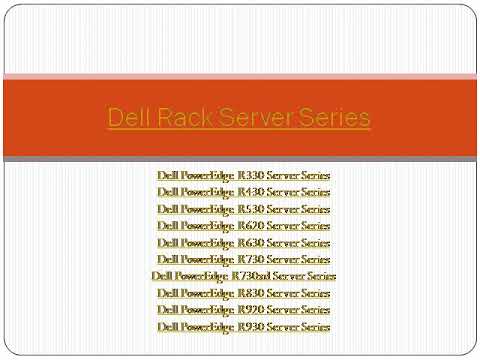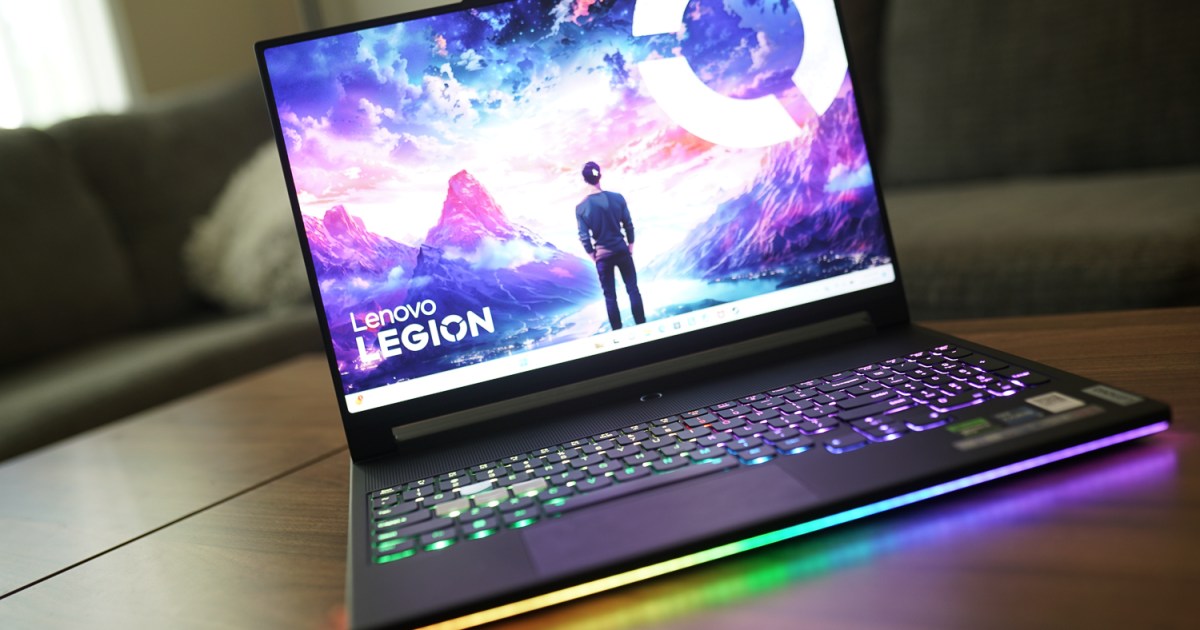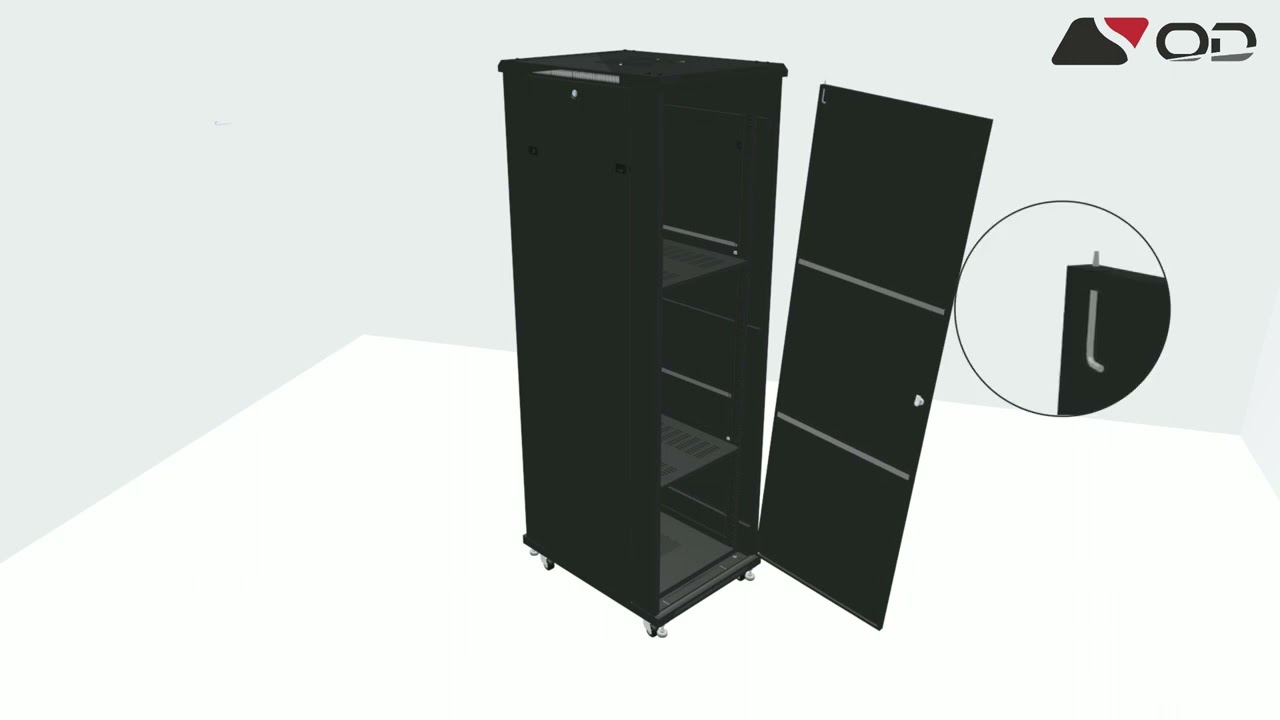Technology
Diagrid launches Catalyst to help enterprises build their microservices

Back in 2019, Microsoft launched Dapr, a new open-source project that made building event-driven distributed applications easier for developers. Like so many popular open-source projects, Dapr spawned its own ecosystem, especially after Microsoft donated it to the Linux Foundation. And as is also so often the case, some of the creators of Dapr — and the related KEDA project — left to found their own companies, including Diagrid, which is launching its fully managed Dapr service into public beta today.
The new service, Catalyst, functions as an API platform, offering developers an alternative to managing their own Dapr installations.

“It’s all about building distributed microservices applications and the complexity that developers face today,” Diagrid CEO and co-founder Mark Fussell told me. “Today, basically, there’s still a mess of frameworks that people put together, repetitive boilerplate code, reinventing the software pattern, and having to stitch together reliability and security into all of that. We addressed a lot of these challenges with the Dapr open source project.”
Catalyst, he said, now allows developers to leverage Dapr, no matter which language they use and which platform they prefer. Previously, Diagrid’s Conductor project was something enterprises had to manage on their own using Kubernetes. Not every company is interested in doing that.
While Catalyst currently supports the core Dapr APIs, the Diagrid team aims to provide support for all of them by early next year.
One of the most interesting ones Catalyst already supports is Workflows. “Workflows is very, very important to developers because it is used in a lot of ways,” Diagrid co-founder and CTO Yaron Schneider said. “For example, we’re seeing a lot of companies using Dapr Workflows to build generative AI workloads. Thales, the large multinational French company — they built their entire Gen AI infrastructure on top of Dapr and we’re seeing more and more of these novel types of workloads using Workflows.” In a way, this also now turns Dapr into an all-purpose integration service.
Companies that want to switch between Dapr and the new fully-managed Catalyst only have to change the API endpoint (assuming they are only using the currently supported features).
“Catalyst is why we founded Diagrid in the first place,” Fussell said. “It’s the very reason because we saw a vision that this complexity and difficulty for developers to build these microservices and distributed applications was not being solved. All the major clouds are still focusing on infrastructure and that’s what they do. They have a really hard time thinking about the application developer space, and then they sort of leave it as an exercise to the reader, as it were, to stitch it all together.”
Technology
Assassin’s Creed Shadows release date delayed to 2025

Ubisoft has announced its highly-anticipated upcoming game Assassin’s Creed Shadows has been delayed until next year.
Instead of releasing it on 12 November as previously planned, it has been pushed back to 14 February 2025.
It follows the disappointing performance of another of the firm’s major titles, Star Wars Outlaws, and concerns from some about how Ubisoft is being run.
The game’s executive producer Marc-Alexis Cote said the developers “need more time to polish and refine the experience”.
“We understand this decision will come as disappointing news,” he said.
“But we sincerely believe this is in the best interest of the game.”
In a trading update sent to Ubisoft’s investors, seen by the BBC, the firm – which is headquartered in France – said despite the game being “feature complete” it needed more time.
“The learnings from the Star Wars Outlaws release led us to provide additional time to further polish the title,” it reads.
Star Wars Outlaws was released in August to strong reviews, but early players complained of bugs and glitches.
In its trading update, Ubisoft notes sales of the game were “softer than expected”, which it seemed to be putting down to a lack of polish.
Mr Cote said the firm would refund fans who had pre-ordered the game, and promised a free expansion to anyone who placed a new pre-order for the revised launch.
When it finally arrives, Assassin’s Creed Shadows will be the first game in the series to be set in Japan – a setting fans have been clamouring for since the series began in 2007.
The decision to push the game back beyond Christmas – usually a lucrative time for game sales – will not have been made lightly.
But the sales performance of Star Wars Outlaws caused Ubisoft’s shares to take a serious hit, when the firm would have been hoping the game would set it back on course.
They have fallen to a price of 11.32 euros a share at the time of writing – the lowest in a decade.
A minority investor wrote a letter to the board earlier this month calling for the company to either be taken private or sold to an investor.
Ubisoft co-founder and boss Yves Guillemot said the move to push back Assassin’s Creed Shadows’ launch was a result of the firm’s second quarter performance – which “fell sort of our expectations”.
“We remain committed to creating games for fans and players that everyone can enjoy,” he said.
Servers computers
Dell Rack Server Series | Dell Tower Server Series | Price/Cost

TieDot Technologies Dealer, Distributor and Re-Seller Provides New Dell PowerEdge Rack Server and Tower Servers in Bangalore – India for price and availability Call: +91-9035020041 | +91-9036000187
source
Technology
Hydrogen off-road race car tested to limits in former coal mine

At a decommissioned coal mine in Scotland, a stark backdrop for the world’s first hydrogen-powered off-road racing car, testing is underway ahead of next year’s hydrogen racing series, Extreme H.
The series is an evolution of the current all-electric series, Extreme E, with the organisers using it to develop hydrogen as a future car technology and showcase its green potential. “We’re using racing to accelerate the adoption, accelerate the innovation around hydrogen,” says Ali Russell, managing director of Extreme E, allowing “you and I to go out and buy our next car as a hydrogen vehicle”.
The Pioneer 25 car uses hydrogen produced using green solar and wind energy sources by Enowa in Saudi Arabia. “In motor racing, we always shoot for gold standards,” says Mark Grain, technical director at Extreme E, who was responsible for developing the car. “We don’t want to compromise and use a lesser form of hydrogen than green hydrogen,” he adds.
However, the racing series is also seen as a technology incubator. While green hydrogen is highly desirable, it is a relatively new technology and scaling to mass adoption may involve less green sources in the interim. “We need to create the right environment for the economics of hydrogen to work, which is about mass adoption,” says Russell. “So whether that’s blue, whether that’s pink, whether that’s grey, whether that’s green,” he says, referring to the various forms of hydrogen production, each of which involves different processes and energy sources, including some that use fossil fuels. “Ultimately, green has got the most important story, but all of those aspects of hydrogen are really important at this moment in time.”
Right now, however, it is all about proving the technology in extreme environments, wrangling performance and getting the car ready to race next season. “We’re not only moving technology, we’re improving the car,” says Russell, “and we’re going to have a much better racing series as a consequence.” As the car gets put through its paces, it certainly seems to be delivering on that promise. “The Extreme H car is going to be quicker than Extreme E car on track,” says Hedda Hosås, Extreme H’s test driver.
Topics:
Technology
The Lenovo Legion 9i is a 10 out of 10 gaming laptop, and it’s on sale


It’s hard to put a cap on how much one should spend on a gaming laptop. And even though we see a lot of excellent gaming PC deals, these resource-heavy machines can still be quite expensive. But you get what you pay for, right? That’s why we’d like to draw your attention to the following Lenovo offer:
Right now, you can buy the Lenovo Legion 9i Gaming Laptop for $3,500. At full price, this model sells for $3,840. At the same time, it’s not the most considerable markdown in the world; every last penny counts, especially when it comes to this kind of power and performance.
Why you should buy the Lenovo Legion 9i
We had the opportunity to take the Legion 9i for a test drive not too long ago and were floored by the results. Our reviewer thought this laptop rivaled the performance of many desktop PCs and praised the 9i for its excellent mini-LED lighting and portability. It also made it onto our best gaming laptops roundup.
This configuration of the Legion 9i comes with a 14th Gen Intel Core i9 that delivers max clock speeds of 5.80GHz, an NVIDIA GeForce RTX 4080 with 12GB of memory, 32GB of RAM, and 1TB of storage. The 16-inch mini-LED screen delivers up to 3200 x 2000 resolution and maintains up to a 165Hz refresh rate. You’ll also get up to 1,200 nits at peak brightness, so expect vibrant and colorful picture quality, along with excellent black levels.
A solid gaming experience is nothing without good audio, and the Legion 9i contains a brilliant two-channel Harman Super Linear Speaker System. This stereo pairing does a terrific job at filling the average-sized room and leverages a Smart Amp with Nahimic Audio for enhanced PC sound. Other noteworthy features include:
- HDMI and USB connections
- A 1080p webcam
- Three months of Xbox PC Game Pass on the house
We’re not sure how long this sale is going to last, so now could be the best time to save. Take $340 off the Lenovo Legion 9i Gaming Laptop when you order through the manufacturer, and be sure to take a look at some of the other Lenovo laptop deals we found. We also have an entire list of gaming laptop deals featuring brands like Alienware and HP.
Servers computers
OD 42U Server Rack : Step by Step Installation
Technology
How Google reduced Android’s safety vulnerabilities by 52%

For years, Google has been working hard to make Android an increasingly secure OS. Attackers look for any loophole they can exploit, using mundane methods like phishing or more complex ones like memory safety vulnerabilities. Now, Google explains how the Safe Coding approach has managed to significantly reduce memory safety vulnerabilities in Android in recent years.
Google uses Safe Coding approach against memory safety vulnerabilities
Memory safety vulnerabilities are those that take advantage of memory-related bugs, such as buffer overflows, format string issues, or dangling pointers, to interact with or even write over the memory. These types of vulnerabilities are still widely present in software development. Developers try to attack them from various approaches, with mitigations and proactive detections predominating. However, Google is confident that Safe Coding is the ideal approach to minimize memory safety vulnerabilities, as evidenced by its results with Android.
The Safe Coding approach prioritizes the use of memory-safe programming languages from the start. However, there is software that is many years old and has millions of lines of key code developed on “memory-unsafe” languages. So, what is Google’s proposal in these cases? The answer is in the gradual transition to memory-safe languages (like Rust) for new features.
Basically, Google proposes that developers start implementing exclusively memory-safe languages when developing new features. In the meantime, old code based on unsafe languages will remain “unchanged” beyond the classic maintenance and bug fixes. This translates into achieving safe, efficient, and cost-effective interoperability between new and old code.
Android’s memory safety vulnerabilities fell 52% in 6 years
According to Google, the Safe Coding approach resulted in a drop in memory safety vulnerabilities in Android from 76% to 24% in just 6 years. However, the idea of keeping memory-unsafe code can seem counterintuitive. After all, if you’re looking for maximum security, your first thought would be to migrate all your code to a safe language. While this may be true, Google’s approach makes sense, and the company explains why.

In software development, code efficiency and cost-effectiveness are key. There are tools or entire systems with many years of development behind them. This involves millions and millions of fundamental lines of code. While a company could simply start rewriting software from scratch based on memory-safe languages, the investment and effort are probably not worth it. The situation might be different in relatively new developments with not much time behind them, though.
Advantages of Safe Coding and interoperability
Google claims that the Safe Coding approach, which is based on code interoperability, is a cost-effective and practical way to adopt memory-safe code. This, in turn, makes it cost-effective, as it allows companies to leverage previous investments. The cost is significantly lower compared to rewriting software from scratch. It is also efficient because it allows new features to continue to be developed while integrating the new, safe code.
Using inherently memory-safe code also ensures lower costs in the long run. Previous approaches favored an endless cycle of “attack and defend” between developers and attackers. Relying on mitigations and proactive detections necessitated continuous action and investment in response to potential attacks. However, Safe Coding allows developers and companies to forget about this, focusing on maintaining and improving features or fixing bugs.
There is also greater productivity thanks to lower code rollback rates. That is, there are fewer emergency code rollback situations due to unexpected bugs. Google claims that Rust offers code rollback rates of less than half that of C++. Essentially, Safe Coding brings significant savings in time and money for businesses and developers. In today’s industry, which closely monitors profitability, this can be crucial.
Google reveals that it implemented interoperability between “Rust ↔︎ C++ and Rust ↔︎ Kotlin.” The company has also contributed both money and tools to power its approach. For example, Google gave $1,000,000 to the Rust Foundation to boost its evolution. It also provided its own interoperability tools, such as Crubit and autocxx.

This is how the Safe Coding approach makes software more secure
You may still be wondering how an approach that keeps memory-unsafe code can lead to an exponential reduction of memory safety vulnerabilities. Google also explains this in its blog post, in a very technical way, but I’ll try to make it simple for everyone.
Through large-scale studies, USENIX Security and Google itself discovered an intriguing phenomenon. Basically, the research concluded that the vast majority of memory vulnerabilities in software have their origin in new code. A significant portion is also derived from recently modified code. Google also noticed that the density of Android memory safety vulnerabilities decreased progressively in old code.
Given that a significant portion of the issue stems from new code, it makes sense to focus on it, correct? This is the reasoning behind Google’s decision to adopt the Safe Coding approach. But why do more problems and vulnerabilities accumulate in new code? This is because every programming language has a fundamental property: maturation.
While the fundamental structure of a language can make it memory unsafe, successive updates can help mitigate this. So, theoretically, unsafe code used in older parts of the software can become less vulnerable over time. By combining the maturation of older code with new features developed in new, inherently memory-safe code, the result will be an exponential decrease in memory vulnerabilities.

Google recommends Rust as a memory-safe language
Of course, porting parts of older code to languages like Rust can make things even safer. However, this isn’t always possible, at least not in a straightforward way. There are cases where moving a single block can bring down the whole castle. Google is adamant about Rust as a memory-safe programming language. So if you’re interested in learning programming or a new language to be competitive in today’s industry, Rust may be what you’re looking for.
Memory safety vulnerabilities aren’t the only ones out there. Malicious third parties will continue to look for ways to try to bypass the security layers of any software. However, having strong barriers in the “guts” of the software ensures that attackers will have to resort to more mundane and easily neutralized methods. For example, you can avoid being a victim of phishing by simply using common sense.
-

 Womens Workouts2 days ago
Womens Workouts2 days ago3 Day Full Body Women’s Dumbbell Only Workout
-

 News1 week ago
News1 week agoYou’re a Hypocrite, And So Am I
-

 Technology1 week ago
Technology1 week agoWould-be reality TV contestants ‘not looking real’
-

 Sport6 days ago
Sport6 days agoJoshua vs Dubois: Chris Eubank Jr says ‘AJ’ could beat Tyson Fury and any other heavyweight in the world
-

 News3 days ago
News3 days agoOur millionaire neighbour blocks us from using public footpath & screams at us in street.. it’s like living in a WARZONE – WordupNews
-

 Science & Environment6 days ago
Science & Environment6 days ago‘Running of the bulls’ festival crowds move like charged particles
-

 Science & Environment7 days ago
Science & Environment7 days agoSunlight-trapping device can generate temperatures over 1000°C
-

 Science & Environment1 week ago
Science & Environment1 week agoHow to unsnarl a tangle of threads, according to physics
-

 Science & Environment7 days ago
Science & Environment7 days agoITER: Is the world’s biggest fusion experiment dead after new delay to 2035?
-

 Science & Environment6 days ago
Science & Environment6 days agoQuantum ‘supersolid’ matter stirred using magnets
-

 Science & Environment7 days ago
Science & Environment7 days agoHow to wrap your mind around the real multiverse
-

 CryptoCurrency6 days ago
CryptoCurrency6 days agoEthereum is a 'contrarian bet' into 2025, says Bitwise exec
-

 Science & Environment7 days ago
Science & Environment7 days agoMaxwell’s demon charges quantum batteries inside of a quantum computer
-

 Science & Environment1 week ago
Science & Environment1 week agoTime travel sci-fi novel is a rip-roaringly good thought experiment
-

 Science & Environment7 days ago
Science & Environment7 days agoLiquid crystals could improve quantum communication devices
-

 CryptoCurrency6 days ago
CryptoCurrency6 days agoDZ Bank partners with Boerse Stuttgart for crypto trading
-

 CryptoCurrency6 days ago
CryptoCurrency6 days agoBitcoin bulls target $64K BTC price hurdle as US stocks eye new record
-

 Science & Environment7 days ago
Science & Environment7 days agoWhy this is a golden age for life to thrive across the universe
-

 Science & Environment6 days ago
Science & Environment6 days agoHyperelastic gel is one of the stretchiest materials known to science
-

 Science & Environment6 days ago
Science & Environment6 days agoQuantum forces used to automatically assemble tiny device
-

 Science & Environment7 days ago
Science & Environment7 days agoLaser helps turn an electron into a coil of mass and charge
-

 Science & Environment1 week ago
Science & Environment1 week agoNerve fibres in the brain could generate quantum entanglement
-

 Science & Environment1 week ago
Science & Environment1 week agoCaroline Ellison aims to duck prison sentence for role in FTX collapse
-

 Science & Environment6 days ago
Science & Environment6 days agoNuclear fusion experiment overcomes two key operating hurdles
-

 CryptoCurrency6 days ago
CryptoCurrency6 days agoBitcoin miners steamrolled after electricity thefts, exchange ‘closure’ scam: Asia Express
-

 CryptoCurrency6 days ago
CryptoCurrency6 days agoCardano founder to meet Argentina president Javier Milei
-

 CryptoCurrency6 days ago
CryptoCurrency6 days agoDorsey’s ‘marketplace of algorithms’ could fix social media… so why hasn’t it?
-

 CryptoCurrency6 days ago
CryptoCurrency6 days agoLow users, sex predators kill Korean metaverses, 3AC sues Terra: Asia Express
-

 Science & Environment3 days ago
Science & Environment3 days agoMeet the world's first female male model | 7.30
-

 News6 days ago
News6 days agoIsrael strikes Lebanese targets as Hizbollah chief warns of ‘red lines’ crossed
-

 Technology6 days ago
Technology6 days agoiPhone 15 Pro Max Camera Review: Depth and Reach
-

 News6 days ago
News6 days agoBrian Tyree Henry on voicing young Megatron, his love for villain roles
-

 Health & fitness1 week ago
Health & fitness1 week agoThe secret to a six pack – and how to keep your washboard abs in 2022
-

 CryptoCurrency6 days ago
CryptoCurrency6 days agoRedStone integrates first oracle price feeds on TON blockchain
-

 CryptoCurrency6 days ago
CryptoCurrency6 days agoSEC asks court for four months to produce documents for Coinbase
-

 CryptoCurrency6 days ago
CryptoCurrency6 days ago‘No matter how bad it gets, there’s a lot going on with NFTs’: 24 Hours of Art, NFT Creator
-

 CryptoCurrency6 days ago
CryptoCurrency6 days agoBlockdaemon mulls 2026 IPO: Report
-

 CryptoCurrency6 days ago
CryptoCurrency6 days agoCoinbase’s cbBTC surges to third-largest wrapped BTC token in just one week
-

 Sport6 days ago
Sport6 days agoUFC Edmonton fight card revealed, including Brandon Moreno vs. Amir Albazi headliner
-

 Science & Environment6 days ago
Science & Environment6 days agoHow one theory ties together everything we know about the universe
-

 Science & Environment7 days ago
Science & Environment7 days agoQuantum time travel: The experiment to ‘send a particle into the past’
-

 Science & Environment7 days ago
Science & Environment7 days agoPhysicists are grappling with their own reproducibility crisis
-

 CryptoCurrency6 days ago
CryptoCurrency6 days ago2 auditors miss $27M Penpie flaw, Pythia’s ‘claim rewards’ bug: Crypto-Sec
-

 CryptoCurrency6 days ago
CryptoCurrency6 days agoJourneys: Robby Yung on Animoca’s Web3 investments, TON and the Mocaverse
-

 CryptoCurrency6 days ago
CryptoCurrency6 days ago$12.1M fraud suspect with ‘new face’ arrested, crypto scam boiler rooms busted: Asia Express
-

 CryptoCurrency6 days ago
CryptoCurrency6 days agoCertiK Ventures discloses $45M investment plan to boost Web3
-

 CryptoCurrency6 days ago
CryptoCurrency6 days agoVitalik tells Ethereum L2s ‘Stage 1 or GTFO’ — Who makes the cut?
-

 CryptoCurrency6 days ago
CryptoCurrency6 days agoEthereum falls to new 42-month low vs. Bitcoin — Bottom or more pain ahead?
-
Business6 days ago
How Labour donor’s largesse tarnished government’s squeaky clean image
-

 News6 days ago
News6 days agoBrian Tyree Henry on voicing young Megatron, his love for villain roles
-

 Womens Workouts5 days ago
Womens Workouts5 days agoBest Exercises if You Want to Build a Great Physique
-

 Womens Workouts5 days ago
Womens Workouts5 days agoEverything a Beginner Needs to Know About Squatting
-

 News6 days ago
News6 days agoChurch same-sex split affecting bishop appointments
-

 Politics1 week ago
Politics1 week agoTrump says he will meet with Indian Prime Minister Narendra Modi next week
-

 Politics6 days ago
Politics6 days agoLabour MP urges UK government to nationalise Grangemouth refinery
-

 News1 week ago
News1 week agoRoad rage suspects in custody after gunshots, drivers ramming vehicles near Boise
-

 Health & fitness1 week ago
Health & fitness1 week agoThe maps that could hold the secret to curing cancer
-

 CryptoCurrency6 days ago
CryptoCurrency6 days agoHelp! My parents are addicted to Pi Network crypto tapper
-

 CryptoCurrency6 days ago
CryptoCurrency6 days agoCrypto scammers orchestrate massive hack on X but barely made $8K
-

 Science & Environment6 days ago
Science & Environment6 days agoTiny magnet could help measure gravity on the quantum scale
-

 Science & Environment6 days ago
Science & Environment6 days agoUK spurns European invitation to join ITER nuclear fusion project
-

 Science & Environment6 days ago
Science & Environment6 days agoWhy we need to invoke philosophy to judge bizarre concepts in science
-

 Science & Environment6 days ago
Science & Environment6 days agoFuture of fusion: How the UK’s JET reactor paved the way for ITER
-

 Science & Environment6 days ago
Science & Environment6 days agoHow do you recycle a nuclear fusion reactor? We’re about to find out
-

 CryptoCurrency6 days ago
CryptoCurrency6 days agoSEC sues ‘fake’ crypto exchanges in first action on pig butchering scams
-

 CryptoCurrency6 days ago
CryptoCurrency6 days agoCZ and Binance face new lawsuit, RFK Jr suspends campaign, and more: Hodler’s Digest Aug. 18 – 24
-

 CryptoCurrency6 days ago
CryptoCurrency6 days agoBeat crypto airdrop bots, Illuvium’s new features coming, PGA Tour Rise: Web3 Gamer
-

 CryptoCurrency6 days ago
CryptoCurrency6 days agoTelegram bot Banana Gun’s users drained of over $1.9M
-

 CryptoCurrency6 days ago
CryptoCurrency6 days agoVonMises bought 60 CryptoPunks in a month before the price spiked: NFT Collector
-

 CryptoCurrency6 days ago
CryptoCurrency6 days ago‘Silly’ to shade Ethereum, the ‘Microsoft of blockchains’ — Bitwise exec
-
Business6 days ago
Thames Water seeks extension on debt terms to avoid renationalisation
-
Politics6 days ago
‘Appalling’ rows over Sue Gray must stop, senior ministers say | Sue Gray
-

 News6 days ago
News6 days agoBrian Tyree Henry on his love for playing villains ahead of “Transformers One” release
-

 News4 days ago
News4 days agoBangladesh Holds the World Accountable to Secure Climate Justice
-

 News3 days ago
News3 days agoWhy Is Everyone Excited About These Smart Insoles?
-

 News3 days ago
News3 days agoFour dead & 18 injured in horror mass shooting with victims ‘caught in crossfire’ as cops hunt multiple gunmen
-

 Travel1 day ago
Travel1 day agoDelta signs codeshare agreement with SAS
-

 Technology6 days ago
Technology6 days agoFivetran targets data security by adding Hybrid Deployment
-

 Science & Environment6 days ago
Science & Environment6 days agoSingle atoms captured morphing into quantum waves in startling image
-

 Money7 days ago
Money7 days agoWhat estate agents get up to in your home – and how they’re being caught
-

 Technology1 week ago
Technology1 week agoCan technology fix the ‘broken’ concert ticketing system?
-

 Science & Environment6 days ago
Science & Environment6 days agoA new kind of experiment at the Large Hadron Collider could unravel quantum reality
-

 Fashion Models6 days ago
Fashion Models6 days agoMixte
-

 Science & Environment6 days ago
Science & Environment6 days agoHow Peter Higgs revealed the forces that hold the universe together
-

 News1 week ago
News1 week ago▶️ Media Bias: How They Spin Attack on Hezbollah and Ignore the Reality
-

 Science & Environment7 days ago
Science & Environment7 days agoBeing in two places at once could make a quantum battery charge faster
-

 CryptoCurrency6 days ago
CryptoCurrency6 days agoLouisiana takes first crypto payment over Bitcoin Lightning
-

 Science & Environment6 days ago
Science & Environment6 days agoA tale of two mysteries: ghostly neutrinos and the proton decay puzzle
-

 CryptoCurrency6 days ago
CryptoCurrency6 days agoDecentraland X account hacked, phishing scam targets MANA airdrop
-

 CryptoCurrency6 days ago
CryptoCurrency6 days agoElon Musk is worth 100K followers: Yat Siu, X Hall of Flame
-

 CryptoCurrency6 days ago
CryptoCurrency6 days agoBitcoin price hits $62.6K as Fed 'crisis' move sparks US stocks warning
-

 CryptoCurrency6 days ago
CryptoCurrency6 days agoMemecoins not the ‘right move’ for celebs, but DApps might be — Skale Labs CMO
-

 CryptoCurrency6 days ago
CryptoCurrency6 days agoETH falls 6% amid Trump assassination attempt, looming rate cuts, ‘FUD’ wave
-
Politics6 days ago
The Guardian view on 10 Downing Street: Labour risks losing the plot | Editorial
-

 Politics6 days ago
Politics6 days agoI’m in control, says Keir Starmer after Sue Gray pay leaks
-
Business6 days ago
UK hospitals with potentially dangerous concrete to be redeveloped
-
Politics6 days ago
‘Hundreds’ of prisoners freed early in England and Wales not fitted with tags | Prisons and probation
-
Business6 days ago
Axel Springer top team close to making eight times their money in KKR deal
-

 Politics6 days ago
Politics6 days agoParties, brothels and drugs plague holiday let neighbours, say MPs
-

 News6 days ago
News6 days ago“Beast Games” contestants sue MrBeast’s production company over “chronic mistreatment”


You must be logged in to post a comment Login